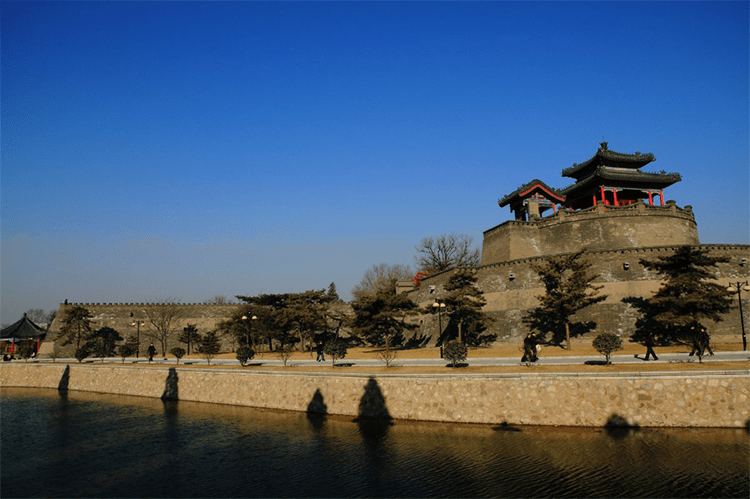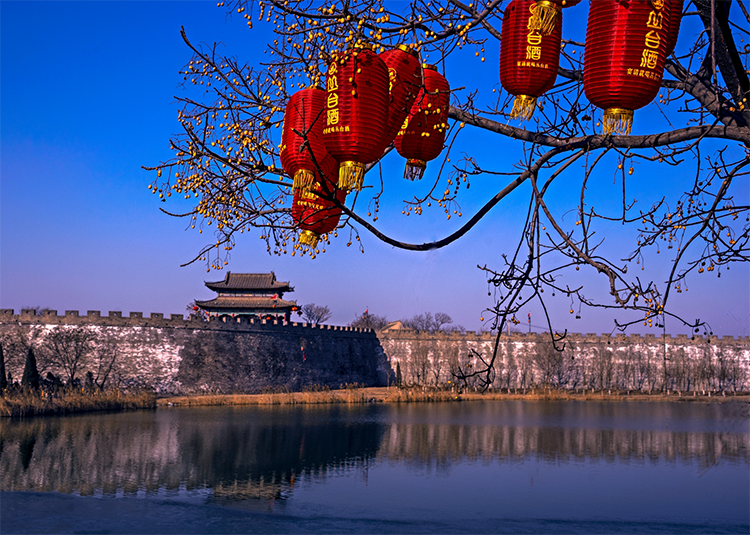Discover Guangfu Ancient City: Northern Water Town Charm and Tai Chi Culture
Introduction
When images of Jiangnan’s waterways come to mind, you might be surprised to find a different kind of water town unfolding on the North China Plain. In Handan’s Yongnian district sits Guangfu Ancient City, a 2,600-year-old “northern water city” ringed by clear moats, intact Ming-Qing walls, and a living Tai Chi tradition. Under the grey-tiled roofs, elders practice Yang-style forms along the ramparts, artisans weave reed tools by the riverbank, and wooden scull boats slip through the moat—making Guangfu both a living museum and an immersive slow-life destination.
1. Soul positioning: The Tai Chi sanctuary of a double-ringed water city
The soul of Guangfu is summed up in one phrase: “water city Tai Chi.” It is the only Ming-Qing city in China still fully encircled by a 4.5-kilometer moat; combined with inner waterways, this double-ring layout is a hydraulic marvel in the north. Even more notable is Guangfu’s Tai Chi lineage: both Yang-style and Wu-style roots run deep here. Practitioners moving through streets and squares make it feel like the entire town breathes to Tai Chi’s rhythm.
Unique selling points:
– Architectural wonder: intact Ming dynasty ramparts, a 140-meter-wide moat and the Hongji Bridge—often called a sister bridge to the famous Zhaozhou Bridge—create a “water Great Wall” spectacle.
– Tai Chi access: join local masters at the city wall for free morning lessons.
– Surprising contrast: experience Jiangnan-like bridges and canals in a typically dry northern climate.
2. Historical code: From Warring States figures to Tai Chi masters
Guangfu’s story begins in the Spring and Autumn period and flourished through the Ming and Qing. During the Warring States era it was home to the famed Zhao scholar Mao Sui (his tomb still stands). Later, thriving waterborne trade made Guangfu a bustling commercial hub. In the 19th century, Tai Chi masters Yang Luchan and Wu Yuxiang established their lineages here—inscribing Tai Chi into the city’s cultural DNA (Wu Yuxiang’s former residence is now a visitor site).
Everyday scenes:
– Early mornings outside the South Gate, elders make cricket cages from reed stalks, a craft inherited from Ming-Qing canal workers.
– On East Main Street’s tea stalls, local storytellers recount the “Mao Sui recommends himself” legend in the Yongnian dialect.
3. Architectural aesthetics: A northern water town on the ramparts
Style: Typical northern Ming-Qing defensive architecture, softened by abundant waterways.
– City walls: Ming-era brick-clad earthen walls remain walkable; from the ramparts you can look down across blue-tile roofs and moored boats.
– Hongji Bridge: a stone arch bridge crafted with techniques akin to the Sui dynasty Zhaozhou Bridge; its paving stones show ancient fossil-like patterns.
– Street scale: main avenues are about 8 meters wide—perfect for strolling—while side lanes narrow to 2 meters, often revealing carved brick gatehouses at corners.
Photo spots and must-sees:
– Corner Tower Sunset: the southwest corner tower is the best vantage point to capture the wall reflected in the moat.
– Wujia Courtyard: visit the Wu family compound to see how a siheyuan (courtyard home) embodies Tai Chi’s yin-yang layout.

4. Intangible heritage and handmade crafts: Traditions still alive
Guangfu’s commercial scene centers on living intangible heritage rather than mass souvenirs:
– Reed-painting studios: artisans turn reeds gathered by the moat into three-dimensional artworks, demonstrating how river water softens raw fibers.
– Tai Chi clothing shops: custom hand-knotted button practice suits with embroidered names.
– Yongnian smoked crispy fish workshops: produced from a Ming-era recipe with transparent kitchens showing the whole process.
Recommended local brands:
– Chen’s Crispy Fish: a century-old hearth producing tender, flaky carp smoked to a crisp.
– Guangfu silt-braised pork elbow: an intangible-heritage meat specialty traditionally cooked wrapped and heated in river silt—rest assured the edible portions never touch the mud.
5. Food of the water city: From breakfast to late-night snacks
Food highlights:
– Breakfast: try Guangfu doumo (a millet porridge with sesame-salt) and water chestnut pastries at the early-morning market by the moat, watching fishermen prepare boats.
– Main meals: order the classic trio—crispy smoked fish, silt-braised pork elbow, and donkey meat sausage—best enjoyed in a riverside private room at a traditional tavern.
– Popular shop: the tea house at Yang Luchan’s former residence sells Tai Chi-shaped mung bean cakes that sell out early.
6. Immersive experiences: Be a Tai Chi disciple for a day
– Regular activities: daily Tai Chi demonstrations at Wuyuxiang Square at 9:00 and 15:00; visitors can join the “public push-hands” session at the end.
– Seasonal events: during Lunar New Year, the Water Temple Fair releases hundreds of lotus lanterns floating along the moat.
– Costume experiences: rent a Qing-dynasty–style practice suit to shoot dramatic “martial arts” photos on the ramparts.
7. Itinerary planning and local tips
Suggested duration:
– a thorough visit requires 6–8 hours (wall walk, Tai Chi lesson, lunch, craft workshop).
Golden route:
– Hongji Bridge → wall cycling → Wuyuxiang residence Tai Chi lesson → East Main Street lunch → reed-paint DIY → corner tower at sunset.
Local secrets:
– Hidden angle: the outer side of the north wall near the wild reeds offers exceptional evening light for photography.
– Avoid pitfalls: don’t climb the wall between 12:00 and 14:00—harsh sun and glare make photos difficult.

Practical information
– Address: Guangfu Town, Yongnian District, Handan City, Hebei Province.
– Transport: take Bus 606 from Handan East Station (about 1 hour) or drive—search “Guangfu Ancient City Parking” (10 CNY/day).
– Costs: entrance to the old town is free; a combined ticket (walls, residences, etc.) is 80 CNY; Tai Chi experience class about 50 CNY per person.
– Payments: most shops accept Alipay; bring small cash (under 20 CNY) for some street stalls.
Conclusion
Guangfu Ancient City reads like a three-dimensional history book—each page reveals a different story: the ramparts recall cold-weapon-era strategy, the moat whispers of canal commerce, and the ever-present Tai Chi embodies a poetic approach to life. When you encounter this “martial” water town in the north, move like Tai Chi: slow down, breathe with the paddle strokes and lantern light, and let time unfold into its most graceful arc.


